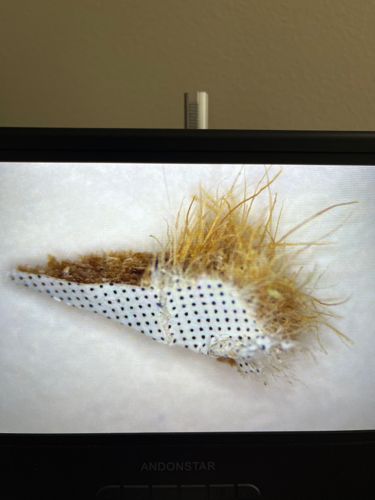Case-bearing Clothes Moth
Scientific Name: Tinea pellionella
Order & Family: Lepidoptera, Tineidae
Size: Larvae up to 1/2 inch (1.2 cm), Adults 1/4 to 1/2 inch (0.6 to 1.2 cm) wingspan.

Natural Habitat
Indoors, particularly in dark, undisturbed areas like closets, attics, and storage spaces, where they can find natural fibers.
Diet & Feeding
Larvae feed primarily on natural fibers containing keratin, such as wool, fur, silk, felt, feathers, and sometimes synthetic blends and even fortified foods.
Behavior Patterns
The larva builds a silk case around itself, incorporating bits of the material it is feeding on, which it carries everywhere it goes. It only pokes its head and legs out to move or feed. Adults are weak fliers and prefer to crawl or make short, darting flights. They are attracted to light but typically stay in darker areas within a home.
Risks & Benefits
Risk: Major pantry and textile pest, causing significant damage to clothing, carpets, upholstery, and stored food items. No known benefits, as they are primarily destructive pests in human environments.
Identified on: 10/30/2025